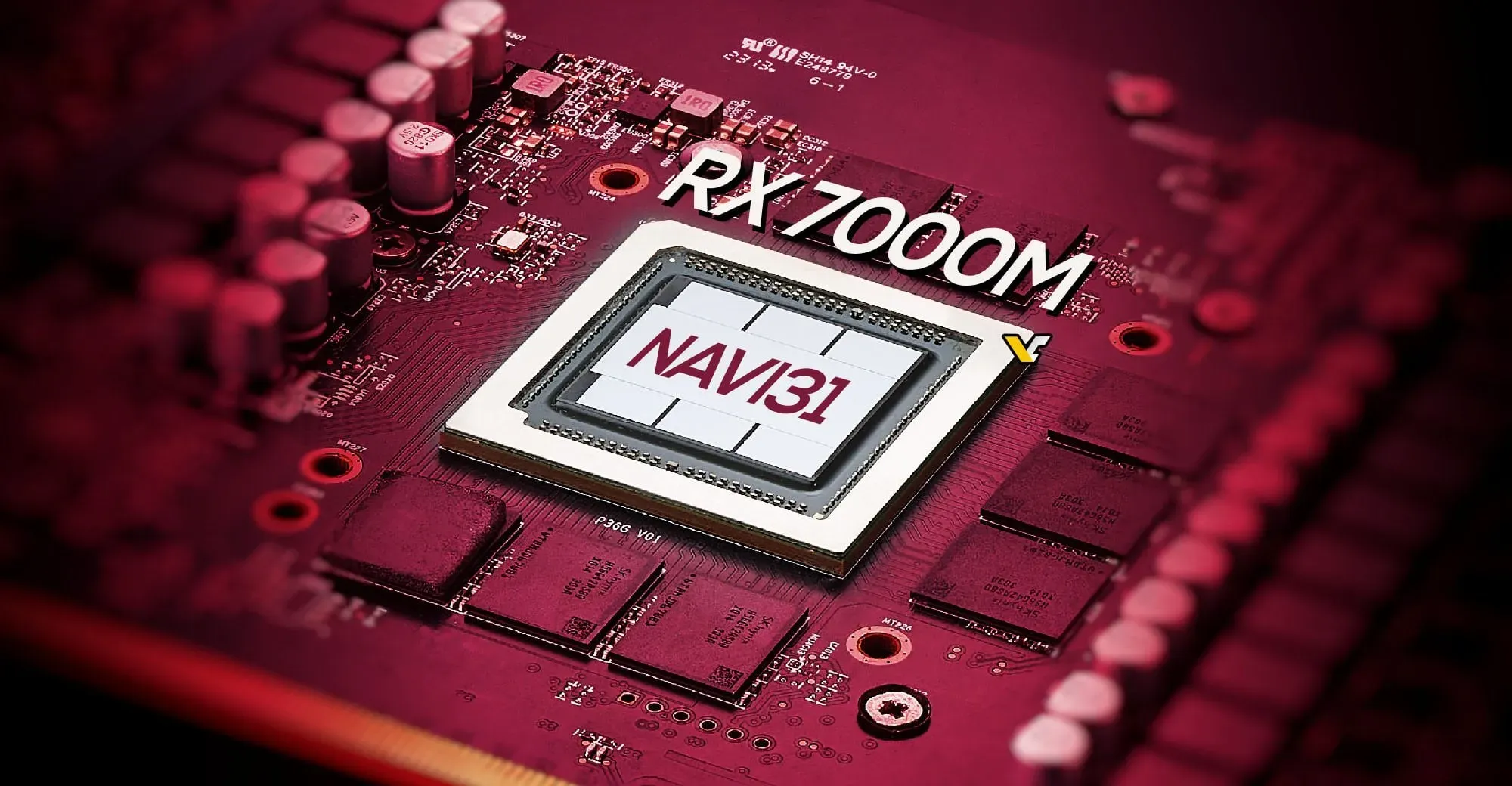AMD enthusiasts and laptop gaming aficionados are abuzz with anticipation as a fresh leak from WCCFtech hints at the impending arrival of the AMD Radeon RX 7900M. This mobile graphics processing unit (GPU) is rumored to be powered by the Navi 31 architecture and boasts an impressive set of specifications, including 72 Compute Units (CUs) and a generous 16 GB of VRAM.
The Rumored Radeon RX 7900M
According to the leak, the Radeon RX 7900M is expected to make its debut on October 19, promising gaming enthusiasts a significant boost in performance. Let's delve deeper into what this leak has unveiled.
Powered by Navi 31
The heart of the Radeon RX 7900M is said to be the Navi 31 chip. This next-generation GPU architecture is eagerly awaited by AMD fans, and it is expected to deliver impressive gaming performance. The leak suggests that the RX 7900M will feature a cut-down version of the Navi 31 chip, packing 72 Compute Units (CUs) and 4608 stream processors. This configuration sets high expectations, with the Radeon RX 7900M potentially being twice as fast as its predecessor, the RX 7600M.
Skipping the 7800M
Interestingly, it appears that AMD is not planning to release a 7800M model, choosing instead to leapfrog to the RX 7900M. This strategic decision might be due to the performance gap between the existing Radeon RX 7600M/S models and their Nvidia RTX 4060 counterparts. AMD seems determined to compete in the high-end mobile GPU market.
Key Specifications
Here's a summary of the key specifications that have surfaced in this leak:
- Architecture: Navi 31
- Compute Units (CUs): 72
- Stream Processors: 4608
- VRAM: 16 GB
These specifications position the Radeon RX 7900M as a formidable contender in the mobile GPU arena.
Launch Date and Competing Models
According to the leak, AMD is expected to launch the Radeon RX 7900M alongside the Threadripper PRO 7000 processors on October 19. This suggests that AMD is aiming for a comprehensive lineup of high-performance components for both gaming laptops and desktop systems.
It's worth noting that the choice of 72 CUs for the RX 7900M indicates that AMD may opt for the Navi 31 dies instead of the Navi 32 variant, which offers a maximum of 60 CUs. However, even with 72 CUs, the mobile version is still approximately 25% less powerful than the full Navi 31 dies found in desktop-grade GPUs like the 7900 XTX. This reduction in CU count is essential to maintain a Thermal Graphics Power (TGP) of 175 watts, aligning it with the specifications of the RTX 4090 mobile version. While the 7900M could theoretically handle a TGP of up to 200 watts, such a configuration would significantly impact battery life.
Another compromise to manage the TGP is a reduction in the memory bus size to 256 bits. Consequently, the VRAM configurations will support 16 GB, as opposed to the 20 or 24 GB options available on desktop models. This adjustment, although necessary to control power consumption, still places the RX 7900M in line with Nvidia's RTX 4090, which also offers 16 GB of VRAM.
Market Impact
One intriguing aspect of this leak is how it could potentially impact the laptop market. Laptop integrators are likely to be incentivized to offer all-AMD configurations, capitalizing on the competitive pricing compared to Intel+Nvidia models. With sub-US$2,000 price points for laptops featuring the R9 7940HS CPU and RX 7900M GPU, gamers may find a compelling reason to opt for Team Red.
However, there's a potential hurdle to consider. Historically, AMD Advantage editions, which feature all-AMD components, tend to be produced in lower volumes. This is often due to Original Equipment Manufacturers (OEMs) not wanting to forfeit the incentives they receive from Intel and Nvidia. It remains to be seen whether AMD can address this supply constraint effectively.
In conclusion, the leaked details surrounding the AMD Radeon RX 7900M are generating significant excitement among gamers and tech enthusiasts. With a launch date just around the corner, the Navi 31-powered GPU, with its 72 CUs and 16 GB of VRAM, promises to deliver a compelling gaming experience. However, it will also face challenges in the market, particularly concerning competition with Intel+Nvidia configurations and potential supply issues.

